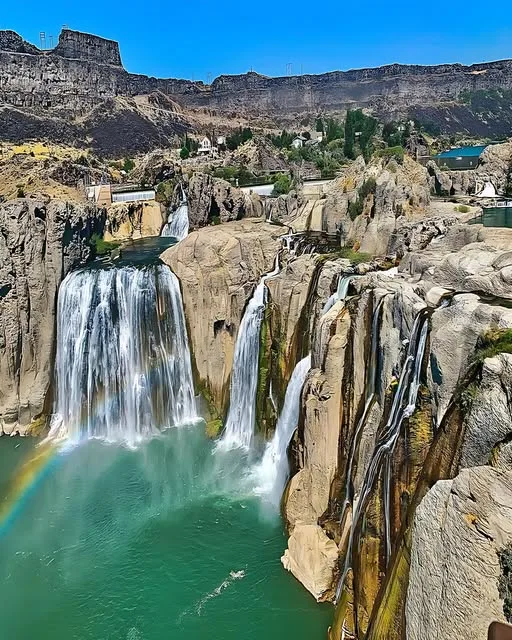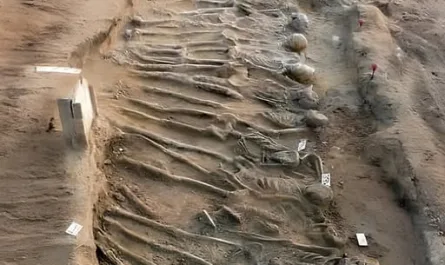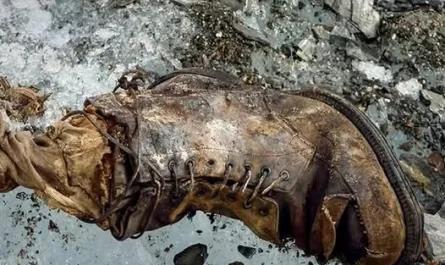Introduction
Nestled just northeast of Twin Falls, Idaho, Shoshone Falls State Park is home to one of nature’s most awe-inspiring spectacles—Shoshone Falls, often hailed as the “Niagara of the West.” On this crisp Wednesday morning, July 9, 2025, at 12:01 PM +07, let’s embark on a virtual journey to this breathtaking site. Standing 212 feet tall—surpassing Niagara Falls by 45 feet—and stretching 900 feet across, this cascading wonder on the Snake River cuts through a dramatic basalt canyon. Formed over 14,500 years ago during the Bonneville Flood of the Pleistocene Ice Age, Shoshone Falls offers a blend of natural grandeur, historical significance, and outdoor adventure that beckons travelers and nature enthusiasts alike.

A Geological Marvel
Shoshone Falls owes its existence to a cataclysmic event that reshaped the landscape. The Bonneville Flood, triggered by the collapse of Lake Bonneville’s ice dam, unleashed a torrent that carved the Snake River Canyon and sculpted the falls. The result is a stunning series of drops and cascades, framed by rugged basalt cliffs that tell a story of ancient geological upheaval. The falls’ height and width, combined with the seasonal roar of water, create a visual and auditory feast, especially when snowmelt swells the flow to 10,000–20,000 cubic feet per second in late spring and early summer. Even in drier months, the stark beauty of the canyon and the mist rising from the base captivate visitors.
Exploring the Park
Managed by the City of Twin Falls, Shoshone Falls State Park is a day-use area open year-round, weather permitting, with an entry fee of $5 per vehicle from March 30 to September 30. The park spans 330 acres and offers a range of amenities to enhance your visit. Scenic overlooks provide panoramic views of the falls, while picnic areas with tables and grills invite families to linger. The 7.6-mile Canyon Rim Trail winds along the canyon’s edge, offering hikers a chance to immerse themselves in the landscape, with shorter loops for casual walkers. A boat ramp on the river below allows for water-based exploration, though boating conditions vary with water levels. Restrooms and parking facilities ensure comfort, making it accessible for all.
Best Times to Visit
Timing is key to experiencing Shoshone Falls at its peak. The ideal season is April to June, when spring snowmelt transforms the falls into a thundering display. During this period, the volume of water can reach its maximum, creating rainbows in the mist and a powerful resonance that echoes through the canyon. Summer and fall see reduced flows due to irrigation and hydroelectric demands, sometimes leaving the falls with minimal water—a stark contrast that highlights the river’s dependence on upstream management. Winter visits are possible but require caution, as icy paths and limited access can pose challenges. Checking the Idaho Power Company’s flow data or park updates is recommended before planning your trip.
A Rich Historical Tapestry
Long before it became a state park, Shoshone Falls held deep cultural significance. Native American tribes, including the Lemhi Shoshone and Bannock, relied on the falls as a vital fishing and trading hub, where salmon migrated upstream until natural barriers stopped their journey. European explorers, such as John C. Fremont in the 1840s, documented the falls, marveling at their scale. By the 1860s, it drew tourists, and in 1932, Frederick and Martha Adams donated 44 acres to the City of Twin Falls, with the state adding 286 acres in 1933 to establish the park. This legacy of preservation ensures that Shoshone Falls remains a public treasure, connecting past and present.
Activities and Wildlife
Beyond the falls, the park offers a playground for outdoor enthusiasts. Photography lovers flock to capture the sunrise or sunset casting golden hues over the water, while birdwatchers spot species like ospreys and great blue herons nesting along the canyon. Fishing is popular below the falls, with rainbow trout and smallmouth bass abundant in the Snake River. The park’s proximity to Twin Falls—about 5 miles—makes it an easy day trip, with nearby attractions like the Perrine Bridge adding to the experience. Always heed safety signs, as the canyon’s edges can be steep and unpredictable.
Conservation and Future
Shoshone Falls’ flow is influenced by human activity, including irrigation and hydroelectric power generation from dams upstream. Conservation efforts focus on balancing water use with ecological needs, ensuring the falls remain a vibrant feature. As climate patterns shift, monitoring water levels becomes crucial, and visitors are encouraged to support sustainable tourism practices. On this July day in 2025, the park stands as a testament to nature’s resilience and humanity’s commitment to preserving it.
Conclusion
Shoshone Falls State Park is more than a destination—it’s a journey through time and nature’s artistry. Whether you’re awed by the thundering cascades in spring or the serene beauty of a quieter season, the falls offer a profound connection to Idaho’s wild heart. As you plan your visit, imagine the ancient floods that shaped this place, the tribes who fished its waters, and the generations who’ve stood where you will. On this Wednesday in 2025, let Shoshone Falls inspire you to explore, reflect, and cherish the enduring power of the natural world.





